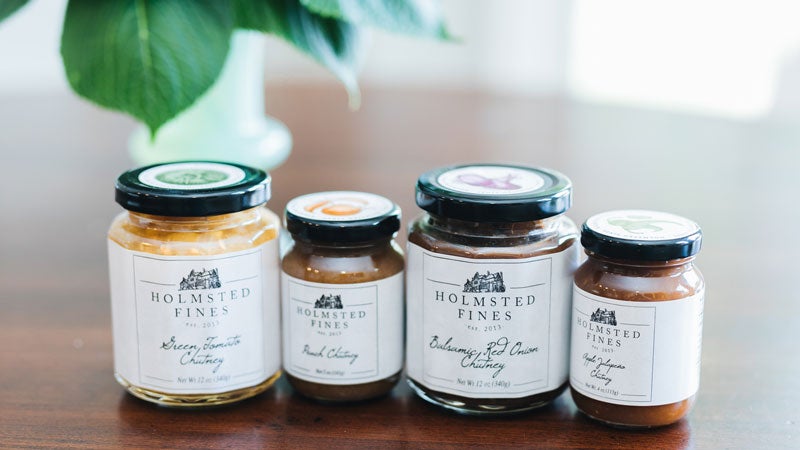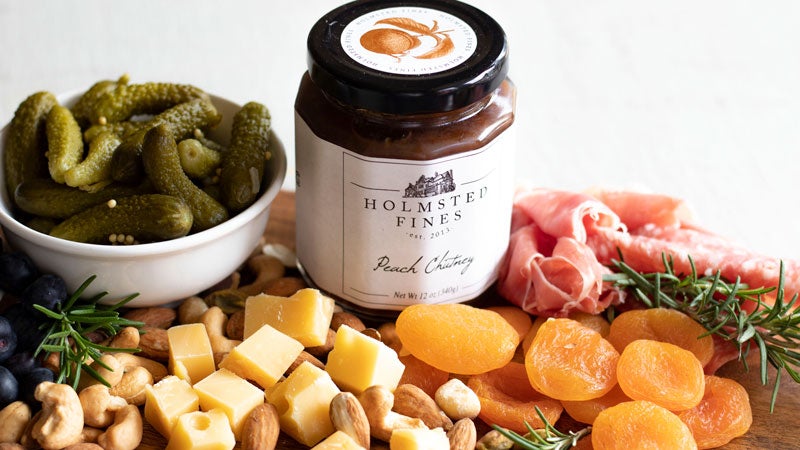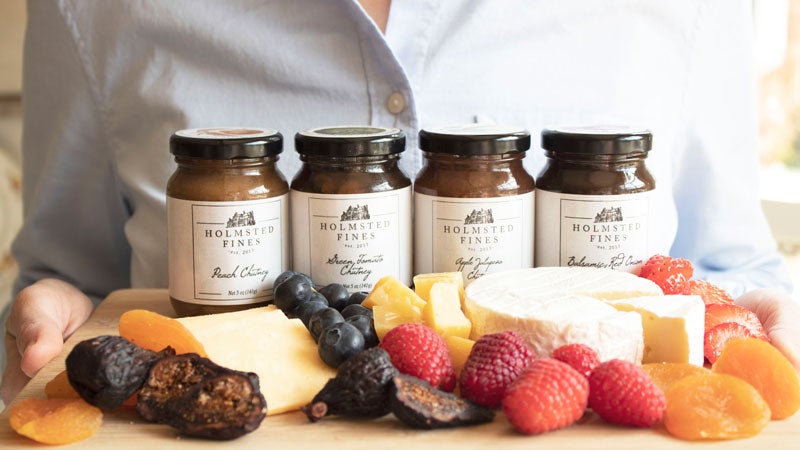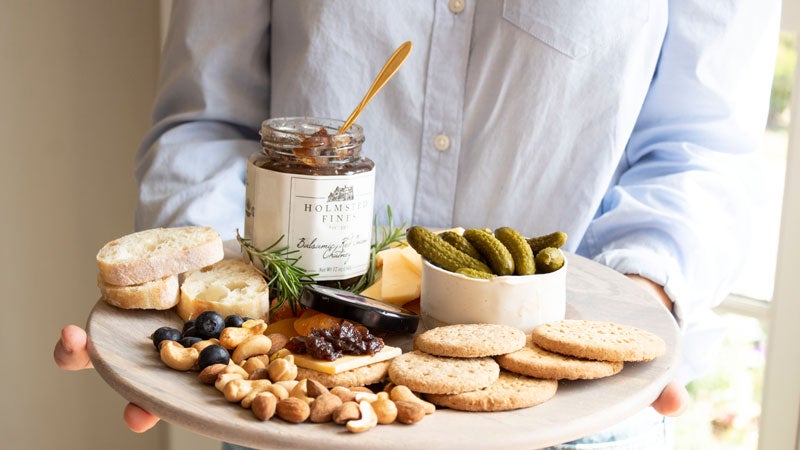Mountain Brook, Alabama, is a long way from the rolling verdant hills of the glorious English countryside, but for Crestline resident Rebecca Williamson, it couldn’t taste any closer. Her bespoke chutney line, Holmsted Fines, certainly has definitive British roots, although Rebecca has also found a way to translate that ubiquitous condiment to our Southern way of eating.
Chutneys are by nature comprised of both sweet and savory components, fruits and vegetables in each jar. Brits have been known to put chutney on everything from scrambled eggs to roasted game, and it is not uncommon to find a jar on every kitchen table in the U.K., nestled between the salt, pepper and perhaps malt vinegar. It is that ubiquitous. And Rebecca firmly believes there is a place for chutney on every Southern table too, contending that if more people here were just familiar with how versatile chutney is as a condiment they too would be finding new ways to add it to almost every recipe.
Rebecca first fell in love with chutney when she was doing mission work with Youth with a Mission just outside of London in 2002. The recent Auburn graduate immediately took to the old manor home, named Holmsted, where she did her discipleship training. The traditions of this place took root in Rebecca’s heart for service and later became the namesake for Holmsted Fines when she began her business in earnest in 2013 with three varieties. Most everyone who has tried the chutneys loves them, but many people might not be familiar with what a chutney is or how to use it at home— beyond pouring a jar over a block of cream cheese and serving with Ritz crackers.
It seems a proper chutney introduction is what is called for here. “My go-to is to add it to a cheese plate where it is perfect,” Rebecca says. Fittingly, at the Pizitz Food Hall in downtown Birmingham, Busy Corner Cheese Shop uses Holmsted Fines chutneys on a number of appetizer boards. “They are great because they really know their cheeses and how to best pair my chutneys,” she adds. You can take in your own board for them to create something or just buy all the components there to create your own masterpiece at home.
Having mastered the cheeseboard accompaniment, Rebecca suggests thinking bigger next: “It is really meant to make your cooking easier. If you are looking to add flavor to roast chicken or pork tenderloin, just add a few spoonfuls of one of these chutneys to the meat.” The sweet and savory components truly heighten the roasted flavor of any meat they’re added to. And you can also go beyond meat, spooning chutney over roasted vegetables or into a warm bowl of couscous, quinoa, or rice where the flavor disperses to provide the ideal culinary backdrop.
Rebecca started the Holmsted Fines label with the traditional green tomato chutney and then added the peach and balsamic red onion varieties. Her latest addition, apple jalapeño, packs a bit of a punch but still remains quite balanced. To underscore the versatility of these chutneys, Rebecca has even more recipes on the Holmsted Fines website. Who knew peach chutney could make your favorite bourbon taste even better or that a dollop of the apple jalapeño chutney could elevate your plain vanilla ice cream? Rebecca loves getting feedback from customers on their favorite ways to use her chutneys and has even toyed with the idea of having a blogger cook-off where consumers vote on the best new use of her traditional condiment.
Holmsted Fines chutneys have developed a reach far beyond what Rebecca originally thought possible – even shipping to California and Hawaii – but it is still the local market where she feels most connected. Prior to closing, Western Supermarkets was one of her best customers, and now she says she is grateful for the opportunity to grow in other outlets, like the Piggly Wiggly, The Cook Store, Whole Foods Market and Alabama Goods. She enjoys the smaller partnerships as well and cherishes the connections made in pop-up shops she does with Catherine Hall and in the Byndel gift boxes curated by Madison Murphy. She would like to have more restaurants feature her chutneys on their menus and is eager to develop those relationships which could expose more diners with the versatility of her goods. Knowing the possibilities are limitless with Holmsted Fines chutneys, we can only dream about what these chefs might concoct.
The History of Chutney
Barron’s Food Lover’s Companion describes chutney in this way: “(a) spicy condiment contains fruit, vinegar, sugar and spices. It can range in texture from chunky to smooth and in degrees of spiciness from mild to hot.” It is interesting to note that many cultures claim chutneys as their own but the source SpicesInc says this: “Chutney is derived from the Hindi word ‘caṭnī”’ and the Northern Indian Urdu word ‘chaṭnī’ meaning ‘to lick.’ Simple spiced chutneys originated in India and can be traced back to around 500 BC and preserving food in this manner was adopted by the Romans. Chutneys made their way to England and France sometime in the early 1600s where they were often referred to as ‘mangoe’ fruits and sometimes as ‘mangoed; vegetables. The fruit versions were much more popular. Chutney recipes flourished in the English-speaking world and the Brits passed on their recipes to their colonies in early America and Australia. Indian immigrants were the ones who introduced chutneys to the Caribbean region in the 17th century. Chutney is also popular throughout Africa.” Knowing that chutneys have a place in all four corners of the globe, is it any wonder that they are right here at home in the produce panoply of the American South? And we have Rebecca Williamson to thank for that.











